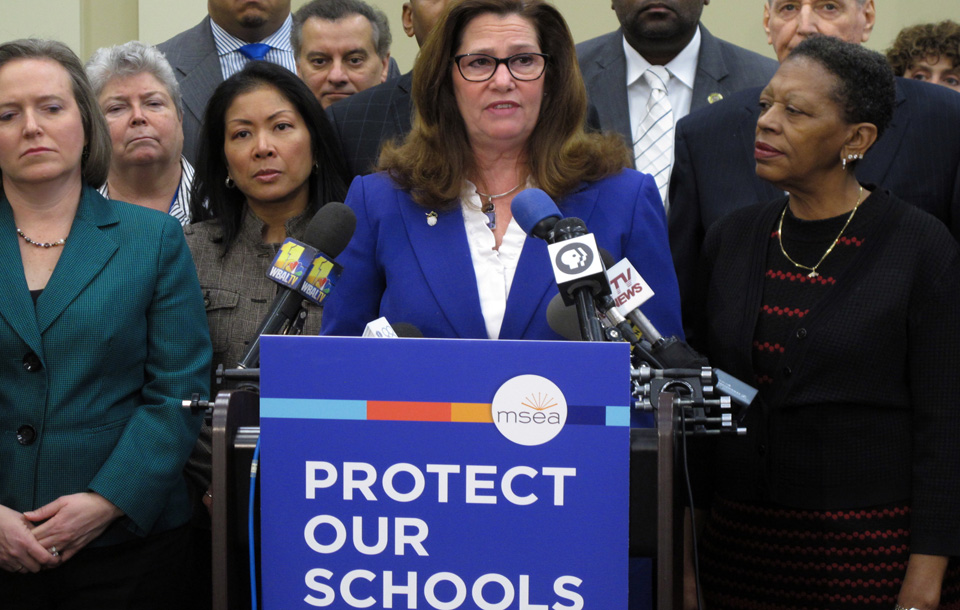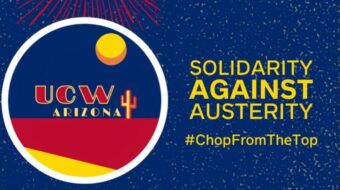
Education privatization is a trend driven by a variety of ideological, political, and economic factors, which are explored in a valuable and important new book produced by a trio of scholars based in Barcelona. The Privatization of Education: A Political Economy of Global Education Reform is a systematic and up-to-date account of the various international efforts underway to turn public education into a product for sale on the market.
As authors Antoni Verger, Clara Fontdevila, and Adrián Zancajo show, in the globalized economy, education is viewed as a key means of improving national competitiveness and as a potentially profitable industry in and of itself. According to the same neoliberal logic, the private sector is portrayed as more efficient, effective, diversified, and innovative than the public sector.
Increasingly, therefore, “involvement of the private sector [including for-profit entities] in education systems” is seen as both “inevitable” and “desirable, according to the authors. However, the privatization agenda is not monolithic. Verger, Fontedevila, and Zancajo identify six different paths towards privatization. These include education privatization resulting from a drastic restructuring of the state’s role in the delivery of public services.
Examples of this type of educational privatization – where it has already taken place as part of a wider program of restructuring of the state along market lines – include Thatcher’s England and Pinochet’s Chile. In both cases, it occurred under conservative governments which were deeply committed to economic neoliberalism and ruthless in implementing their agenda. The structural changes wrought proved immune to reversal by subsequently elected center-left governments.
The often-vaunted social democratic Scandinavian countries have also been far from unaffected by the privatization agenda. With the notable exception of Sweden, which introduced vouchers and for-profit schools, most of the changes can be characterized as what the authors refer to as “endo-privatization,” that is, changes designed to make the public sector act more like the private sector, rather than “exo-privatization”, which entails actually opening up services previously provided by the public sector to private operators.
Scaling up privatization
The United States is identified as a leading example of the latter path to privatization. The decentralized nature of the American schooling system has meant that educational reform is subject to interventions from various players at local, state, and national levels. Implementation of neoliberal reforms has been uneven and contested. Nevertheless, privatization has advanced, though charter schooling has proved far more amenable to implementation than vouchers.
-
Trump’s pick for Secretary of Education would privatize public schools
-
-
DeVos is qualified to do Trump’s bidding: Dismantle public education
This path to privatization is also typically followed in low-income countries. In some of these settings, there is a history of low-fee, private schools set up by local entrepreneurs in response to inadequate provision of public school facilities. More recently, governments and international aid and financial agencies have encouraged the growth of these low-fee schools as a means of providing increased educational opportunity and economic growth without imposing a severe additional funding burden on governments. This expansion of low-fee private provision has been enthusiastically taken up, with large, often international organizations supplanting local entrepreneurs as operators.
The Netherlands, Belgium, and Spain are examined as nations where faith-based institutions have historically played an important role in providing schooling (on a non-profit basis). These “public-private partnerships” (PPPs) pre-date the ascendancy of neoliberalism as a global policy imperative.
Nevertheless, these private institutions can espouse neoliberal “school choice” arguments to support their continued subsidization by the state, and their presence as a rival to public schools can lead to the adoption of practices by the latter that are seen as positioning of themselves competitively, such as private sector management practices.
Privatization by way of catastrophe
Natural disasters and violent conflicts can also set the stage for the implementation of radical reform. “Emergency measures” become the basis for a complete restructuring of social institutions, schools included. In the wake of Hurricane Katrina, for example, the public school system of New Orleans was reorganized: more than 7,000 teachers were dismissed, the teachers’ union wiped out, and numerous charter schools established (before the hurricane, New Orleans had 112 public schools and 8 charter schools; by 2014, only four public schools remained in operation).
A similar agenda was put into place as part of the international recovery program following the 2010 earthquake in Haiti. The aftermath of wars in El Salvador and Iraq has also seen the implementation of privatized schooling on a large scale.
Other useful and readable chapters in the book include one dealing with the various non-state actors who play important roles in prosecuting the privatization agenda, and one on the groups opposing these reforms – of which teacher unions are by far the most prominent.
The Privatization of Education: A Political Economy of Global Education Reform
By Antoni Verger, Clara Fontdevila, and Adrián Zancajo
Teachers College Press, 2016. $42.95 (paperback); $33.56 (eBook)
This review that originally appeared in the Queensland Teachers’ Union Journal. The text presented here is an edited version of that which appeared in The Guardian (Australia).












Comments